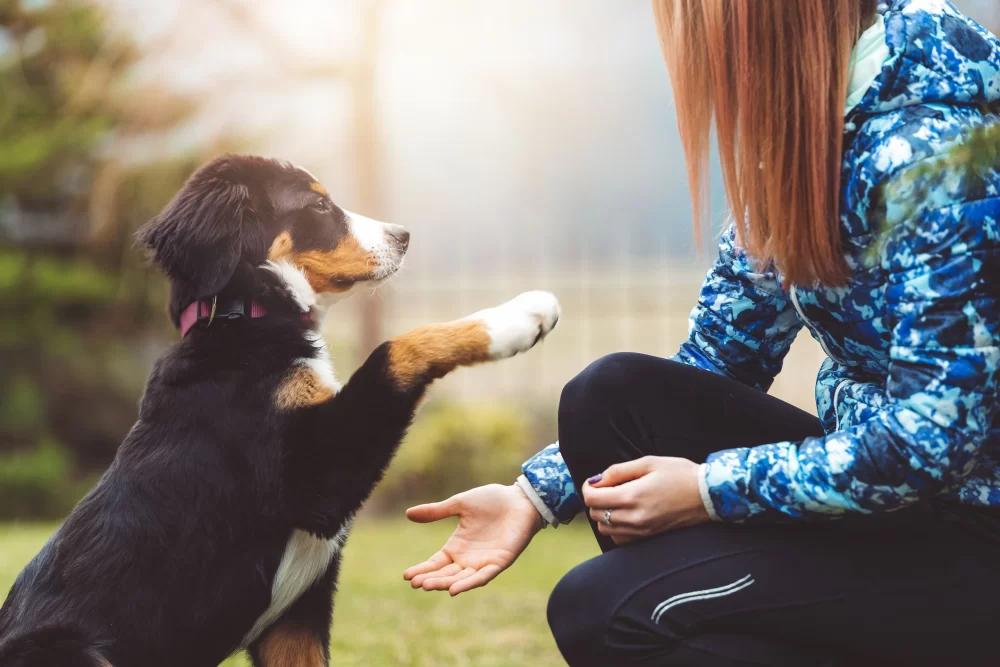Best Dog Training Methods for Puppies: Effective Tips and Techniques
Bringing a new puppy into your home is an exciting and rewarding experience. As a new puppy parent, you want to ensure that your furry friend grows up to be well-behaved, happy, and confident. However, achieving this goal requires commitment and a solid plan for puppy training. In this article, I’ll walk you through the best dog training methods for puppies, share some helpful tips, and tell you about the techniques that worked for me as I trained my own puppy.
The Importance of Early Training for Puppies
Training your puppy early is one of the best decisions you can make as a pet owner. Puppies have a critical socialization window, and starting training early can help establish good habits and behaviors that will last a lifetime. Without proper training, puppies can develop undesirable behaviors such as excessive barking, chewing, or jumping up on people.
Early training also helps you build a strong bond with your puppy, setting the foundation for a lifetime of mutual respect and understanding. A well-trained puppy is not only easier to live with, but they are also more likely to become a confident and happy adult dog.
1. Positive Reinforcement: The Foundation of Puppy Training
One of the best dog training methods for puppies is positive reinforcement. This method involves rewarding your puppy for displaying desired behaviors, encouraging them to repeat those behaviors in the future. It’s a powerful and effective way to teach puppies, and it’s also fun for both you and your puppy!
When I first started training my puppy, I relied heavily on positive reinforcement. Every time my puppy sat on command, I rewarded him with a treat and praise. Over time, he began to associate sitting with a positive outcome, and soon, he was sitting on command without hesitation.
Positive reinforcement can take many forms, including treats, praise, and playtime. Just make sure that the reward is something your puppy loves, so they’re motivated to repeat the behavior. Timing is crucial—make sure to reward your puppy immediately after they perform the desired behavior, so they make the connection between the action and the reward.
2. Crate Training: Teaching Your Puppy to Love Their Space
Crate training is another essential method for puppy training. A crate is not a punishment; rather, it’s a safe and comfortable space where your puppy can rest and relax. Crate training helps teach your puppy housebreaking, creates a sense of security, and provides a designated area for them when you’re not around.
When I introduced my puppy to his crate, I made sure to make it a positive experience. I placed a soft blanket and his favorite toys inside, so he felt comfortable. Gradually, I began leaving him in the crate for short periods of time while I was at home, and then I increased the duration as he became more comfortable.
One of the key points in crate training is to avoid using the crate as punishment. The crate should always be a place where your puppy can feel safe and at ease. If your puppy starts to resist being in the crate, never force them inside; instead, try to make it a more enjoyable experience by offering treats or toys when they go in on their own.
3. Socialization: Exposing Your Puppy to New Experiences
Socializing your puppy is one of the most important aspects of training. Proper socialization involves exposing your puppy to a variety of people, pets, environments, and situations. This helps your puppy become well-adjusted, less fearful, and more confident as they grow up.
When I socialized my puppy, I made sure to introduce him to different types of people, including children, adults, and seniors. I also took him to various environments, such as parks, pet-friendly stores, and quiet neighborhoods. The goal was to help him feel comfortable and relaxed in a wide range of settings.
Socialization should begin as early as possible, ideally between 3 and 14 weeks of age, but it can continue throughout your puppy’s life. Be sure to introduce new experiences slowly and positively, rewarding calm behavior and giving your puppy time to adjust at their own pace.
4. Basic Commands: Teaching Your Puppy Essential Skills
Teaching your puppy basic commands is an essential part of their training. Commands like “sit,” “stay,” “come,” and “leave it” are not only practical but also help your puppy learn to respond to your cues and build trust. These commands also lay the foundation for more advanced training down the road.
When I started teaching my puppy the “sit” command, I used a treat to guide him into the position. As soon as he sat, I immediately rewarded him with the treat and praise. After a few repetitions, he began to understand that sitting was the key to getting a reward.
Consistency is key when teaching basic commands. Practice daily, but keep the training sessions short and fun, so your puppy doesn’t get bored or frustrated. Gradually, you can introduce more commands and make training sessions more challenging as your puppy masters the basics.
5. Dealing with Puppy Behavior Issues
All puppies go through a phase of behavioral challenges, and it’s important to address these issues early on to prevent them from becoming ingrained habits. Common puppy behavior issues include chewing, biting, jumping, and excessive barking. The good news is that these issues can usually be corrected with the right training methods.
When my puppy went through his chewing phase, I made sure to provide him with plenty of appropriate chew toys and redirected his attention whenever he tried to chew on furniture or shoes. I also used positive reinforcement to reward him for chewing on the right things.
For biting, I used a “yelp” technique to mimic the behavior of a littermate. Whenever my puppy nipped too hard during play, I would let out a sharp “ouch” to signal that the behavior wasn’t acceptable. I then redirected him to a toy or alternative activity.
6. Puppy Training Classes: A Structured Learning Environment
If you’re looking for additional guidance, puppy training classes are a great option. These classes offer a structured environment where your puppy can learn important skills, and you can receive expert advice from professional trainers. I enrolled my puppy in a basic obedience class, and it made a huge difference in his progress. The classes not only helped him learn commands but also taught me how to communicate more effectively with him.
Puppy training classes provide opportunities for socialization with other dogs and people, and they can also address specific behavioral issues. Look for a class that uses positive reinforcement techniques, as these are the most effective and humane methods for training puppies.
Real-Life Example: My Journey with My Puppy
Training my puppy, Max, was an incredibly rewarding experience. When I first brought him home, he was a bundle of energy with no idea of what “sit” or “stay” meant. But through patience, consistency, and the right training methods, Max became a well-behaved and obedient dog.
We started with basic commands, and over time, I introduced more advanced training techniques. The crate became his safe space, and he learned to socialize with other dogs and people. Max’s progress was a testament to the power of positive reinforcement, socialization, and proper training methods. Now, he’s a confident, well-adjusted dog who loves interacting with other pets and people.
Conclusion: The Key to Success in Puppy Training
Training your puppy can be a challenging but incredibly rewarding experience. By using positive reinforcement, socialization, basic command training, and addressing behavioral issues early on, you can help your puppy grow into a well-behaved and confident adult dog. Remember to be patient, consistent, and always make training fun for your puppy. With the right methods and a lot of love, your puppy will thrive!












